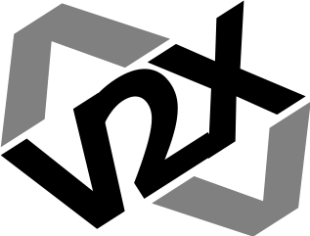Introduction
V2X (Vehicle-to-Everything) technology is no longer confined to research labs or test tracks. Across the globe, real-world implementations are revolutionizing transportation systems by making roads safer, traffic more efficient, and cities smarter. In this article, we delve into practical applications and explore the success stories that underscore V2X’s transformative potential.

1. Real-World Use Cases of V2X Technology
1.1 Collision Avoidance Systems
- How It Works: V2X enables vehicles to share real-time data, such as speed, location, and direction, creating a 360-degree awareness of their surroundings.
- Example Scenarios:
- Vehicles warn each other of sudden braking or unexpected lane changes.
- At intersections, vehicles communicate with traffic lights to detect potential cross-traffic collisions.
Impact:
- Reduction in accidents, especially in high-risk zones like intersections and roundabouts.
- Enhanced safety in adverse weather conditions where visibility is low.
Case Study:
In Michigan, a V2X-enabled intersection pilot program reduced accidents by 26% within its first year.
1.2 Emergency Vehicle Prioritization
- How It Works: Emergency vehicles equipped with V2X communicate with traffic lights to turn signals green and with nearby vehicles to create a clear path.
- Applications:
- Faster response to medical emergencies, fires, and accidents.
- Minimizing disruptions to general traffic flow.
Impact:
- Reduced response times by 20-30%.
- Improved safety for pedestrians and vehicles near emergency zones.
Example:
Barcelona uses V2X-enabled priority systems to reduce ambulance delays, saving critical minutes during emergencies.
1.3 Pedestrian and Cyclist Safety
- How It Works: Sensors on vehicles detect pedestrians and cyclists through V2X communication and alert drivers or initiate automatic braking.
- Key Features:
- Real-time alerts for drivers when pedestrians are in blind spots.
- Integration with smart crosswalks that signal vehicles when pedestrians are crossing.
Impact:
- Reduction in vehicle-pedestrian accidents, particularly in urban areas.
Example:
Japan’s deployment of V2X pedestrian safety technology has cut pedestrian-related accidents by nearly 30%.
1.4 Traffic Signal Optimization
- How It Works: Smart traffic signals connected to V2X systems adjust in real-time based on traffic density, weather conditions, and incident data.
- Key Features:
- Dynamic light timing to reduce wait times.
- Prioritization of public transit and emergency vehicles.
Impact:
- Shorter commute times and reduced fuel consumption.
- Up to 25% fewer traffic jams in pilot cities.
Example:
Singapore’s V2X-enabled adaptive traffic systems have reduced congestion-related delays by 12%.
1.5 Vehicle Platooning
- How It Works: V2X technology enables a convoy of vehicles to travel in close formation, communicating in real time to synchronize acceleration, braking, and steering.
- Applications:
- Long-haul trucking to reduce fuel consumption.
- Safe highway travel with reduced human intervention.
Impact:
- Fuel savings of up to 15%.
- Increased safety by reducing human error in high-speed scenarios.
Example:
The European Union’s ENSEMBLE Project demonstrated successful multi-brand platooning with fuel savings and enhanced coordination.
2. Success Stories from Around the World
2.1 Tampa Connected Vehicle Pilot (United States)
- Overview: A large-scale pilot program focusing on deploying V2X at intersections, highways, and public transport systems.
- Results:
- 27% reduction in rear-end collisions.
- Reduced travel delays during peak hours by 10%.
2.2 C-Roads Initiative (European Union)
- Overview: A project spanning 18 countries, focusing on cross-border interoperability and large-scale V2X deployments.
- Achievements:
- Successful communication between vehicles traveling across different countries.
- Enhanced driver safety through real-time hazard alerts, such as icy roads and lane closures.
2.3 Shanghai’s 5G-Enabled Smart Traffic System (China)
- Overview: Integration of 5G and V2X technologies in urban settings.
- Key Benefits:
- 20% reduction in city-wide traffic congestion.
- Deployment of autonomous shuttle services integrated with V2X systems.
2.4 European Truck Platooning Challenge
- Overview: Coordinated by the Dutch government, this initiative tested the use of V2X for multi-brand truck platooning.
- Results:
- Demonstrated fuel savings of 10-15%.
- Enhanced cooperation between different manufacturers to standardize platooning.
3. Measurable Benefits of V2X Deployments
Safety:
- Studies show up to a 50% reduction in accidents at intersections equipped with V2X.
- Improved emergency response times directly linked to life-saving outcomes.
Efficiency:
- Traffic signal optimization reduces commute times by up to 20% in urban settings.
- Highway congestion is minimized, cutting travel times during peak hours.
Environmental Impact:
- Reduced idling times lead to a 15-25% decrease in fuel consumption.
- Lower CO2 emissions contribute to cleaner air in urban areas.
4. The Road Ahead
Scaling Deployments
Pilot programs need to expand to nationwide or global deployments, with a focus on interoperability across borders.
Integration with Autonomous Vehicles
V2X will play a critical role in ensuring the safety and efficiency of autonomous vehicle systems, particularly in mixed traffic conditions.
Policy and Standardization
Harmonized regulations across regions are essential to ensure that V2X systems from different automakers and regions work seamlessly.
V2X technology is no longer just a concept; it is actively transforming transportation systems worldwide. These real-world use cases and success stories highlight its potential to enhance safety, reduce congestion, and promote sustainability. With continued advancements and broader deployments, V2X promises to shape the future of mobility and create smarter, more connected cities for everyone.
